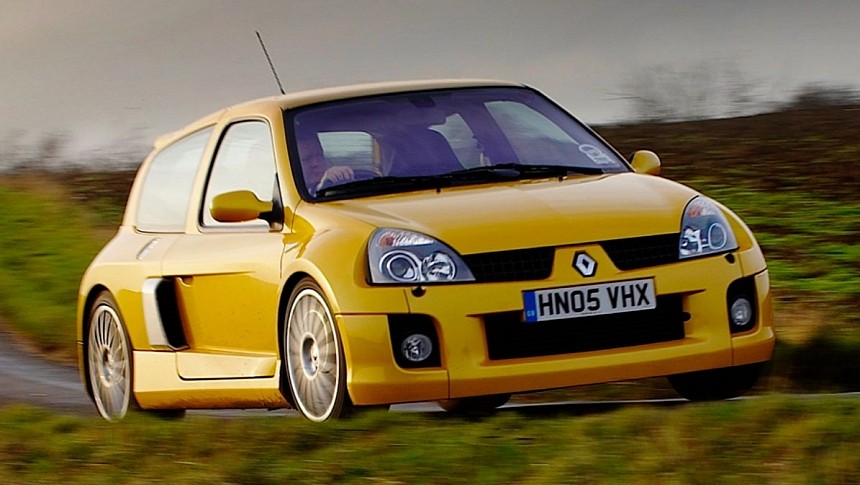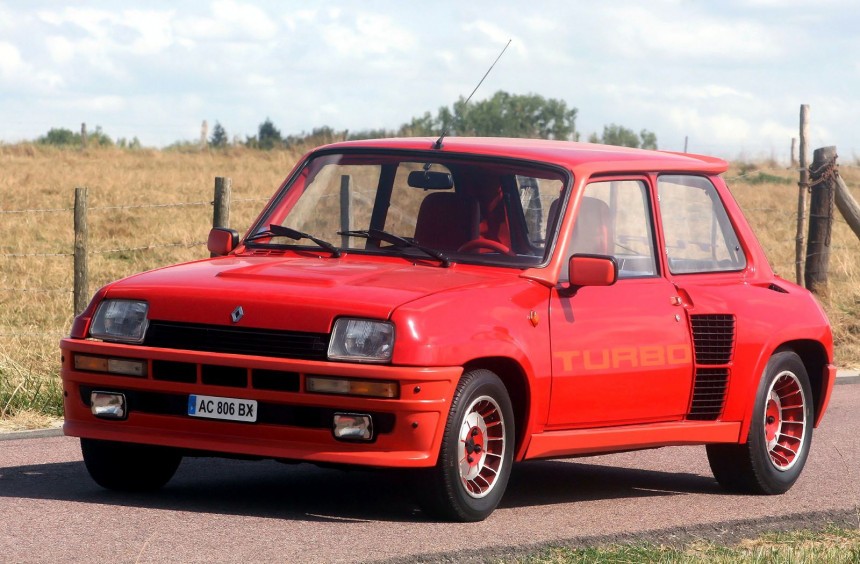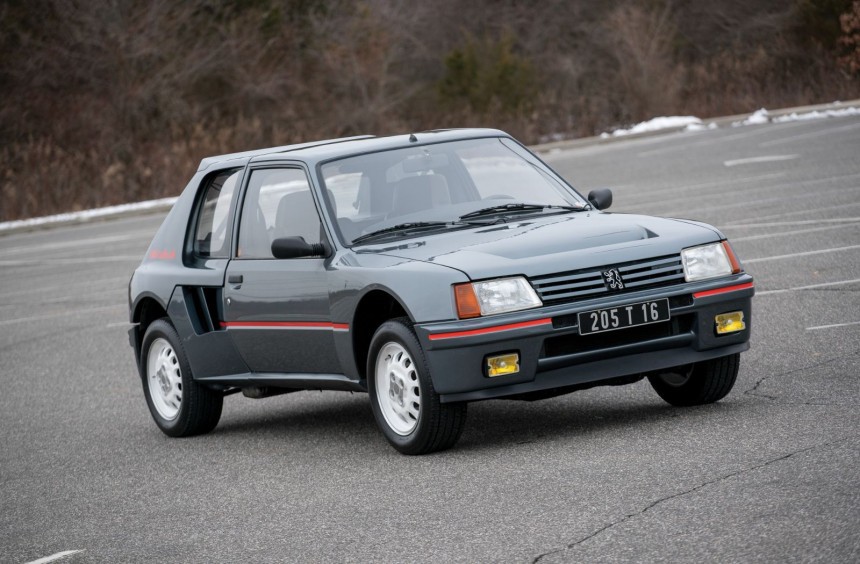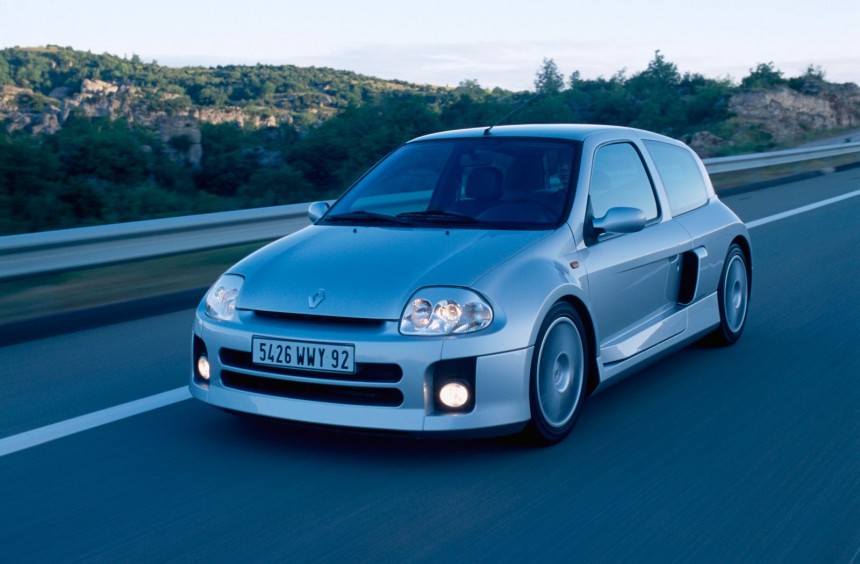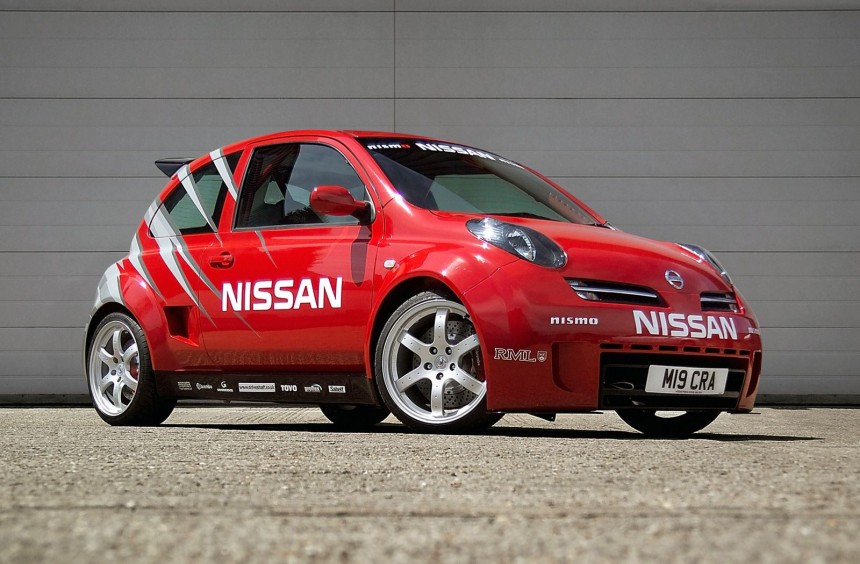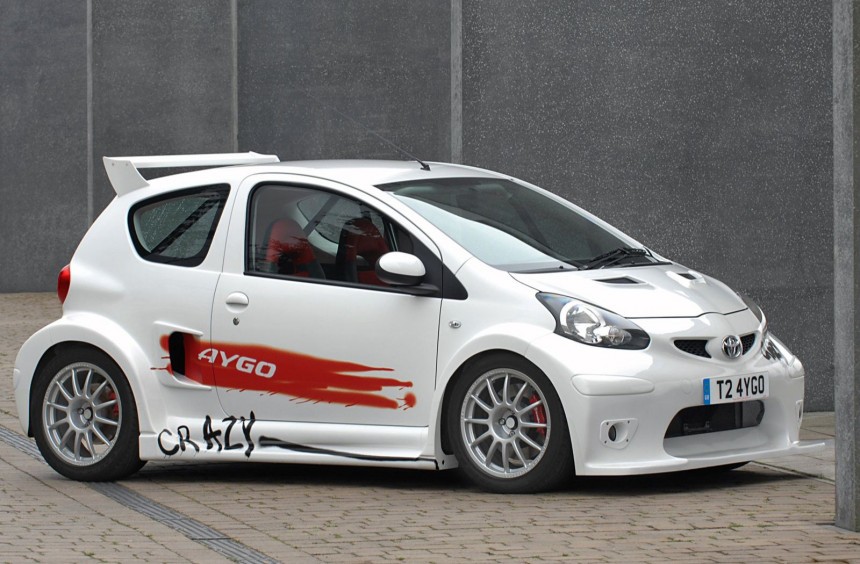Though smaller hatchbacks were designed to offer people an affordable mode of transportation and nothing more, several manufacturers decided to transform their tiny, entry-level models into insane, mid-engine beasts.
The idea of placing the powerplant as close to the middle of a car's chassis as possible position had fascinated engineers with motorsport aspirations since the early 1900s since it drastically improved weight distribution and, thus, handling.
Though a few prototypes were built during those early days of the automobile, the design began being employed in developing road and race cars during the 1950s and 1960s.
From the 1970s onwards, mid-engine sports cars were commonplace, so several engineers decided to use the configuration on tiny, series production hatchbacks to create lighter motorsport weapons or just showcase their skills with crazy, one-off concepts.
The first such mad project was kicked off in the late 1970s by Renault vice-president Jean Terramorsi, who wanted his company to win the World Rally Championship (WRC).
Inspired by Lancia's successful Stratos, Terramorsi decided to transform the tiny Renault 5 into a mid-engine beast.
Introduced in 1972, the 5 (or Le Car in the US) was a successful entry-level people mover in Europe. Though it initially had nothing sporty about it, several Gordini and Alpine versions that made a little more power than the standard model were subsequently developed.
Based on the Alpine version and developed in collaboration with Bertone, the Turbo took the notion of a sporty 5 to a whole different dimension.
Although it resembled the standard model, the mid-engine beast was constructed on a bespoke chassis with a rear suspension setup derived from the rear-engined Alpine A310. It also featured a thoroughly redesigned bodywork and was now rear-wheel-driven.
Power came from a 1.4-liter Cléon-Fonte four-cylinder that received fuel injection and a Garrett T3 turbocharger, which enabled it to produce 158 hp.
Introduced in 1980 as a street-legal homologation special, the R5 Turbo was capable of sports car performance and became France's most powerful production car.
However, it enjoyed limited success in rallying and never posed a real threat in the WRC, despite debuting with a win at the rally of Monte Carol.
Introduced in 1983, the Peugeot 205 was created to rival the widely popular Volkswagen Golf.
In standard guise, there was nothing special about it, but like its German rival, the 205 model line welcomed a performance-oriented GTI version in 1984.
Powered by a 1.9-liter engine rated at 115 hp, the GTI was a nice sporty addition, but it wasn't the sportiest 205 that Peugeot introduced that year.
Like the R5 Turbo, Peugeot's WRC homologation special dubbed 205 Turbo 16 (or T16) became the most insane Peugeot production car ever.
Developed with help from French coachbuilder Heuliez, it featured a bespoke monocoque chassis and complex bodywork modifications made to accommodate the mid-mounted engine.
The car also featured 4WD and was powered by a specifically built DOHC 16-valve turbocharged four-cylinder limited to 197 horsepower but capable of over 500 horsepower in rally specification.
Today, the 205 T16 is a legend among street-legal hot hatches and a rallying icon. It's remembered as the Audi quattro's worst nightmare for dominating the 1985 and 1986 seasons on its way to two consecutive Drivers' and Constructors' titles.
In 1990, Renault released the R5's long-awaited successor and gave it a more original name: Clio.
Two slightly sportier versions were introduced during the first generations, but none were particularly impressive.
That would change in 2001 when Renault unveiled the spiritual successor of the R5 Turbo in the shape of a mid-engine production Clio Mk II.
Officially called Clio V6 Renault Sport and based on the Clio V6 Trophy race car, the epic hot hatch shared only a few components with the standard model, such as the headlights, taillights, windshield, or side mirrors.
The mid-mounted engine that sent power to the rear wheels was a 2.9-liter V6 sourced from the PSA Group (Peugeot-Citroen). Initially, it made 227 hp. Then, the naturally aspirated unit was boosted to 252 hp in the facelifted 2003 Phase II model.
The impressive Clio V6 was discontinued after 2005. During the four-year production run, Renault Sport built 1,555 Phase I and 1,309 Phase II V6 Clios.
Launched in 2002, the third generation Micra (also known as March in Japan) was Nissan's smallest, most basic, and affordable global model.
Unlike the R5, 205, or Clio, the tiny Japanese model was never available in a sporty guise, but the manufacturer considered changing that.
About a year after the official unveiling of the third-gen, Nissan showcased a jaw-dropping concept, hinting that a similar version might make it into production.
Called Micra R, the one-off was built by a renowned British motorsports team and engineering company, Ray Mallock Ltd, and despite its wild appearance, it was completely street-legal.
The R was based on a standard Micra unibody that received many upgrades from the Nissan parts bin, bespoke body panels, larger wheels, and a roll cage.
Under the hood, it only hid a gas tank and a radiator as the engine was moved behind the front seats. The unit chosen for the project was a 265-hp, race-bred 2.0-liter that sent power to the rear wheels through a six-speed sequential gearbox.
Unfortunately, the spectacular Micra R or a similar performance model never made it into production.
Launched in 2005, the first-generation Aygo was a city car co-developed by Toyota and French conglomerate PSA (now part of Stellantis).
Sold alongside its re-barged siblings, the Peugeot 107 and Citroen C1, this tiny hatchback was basically a motorized shopping cart that made the Yaris look like more like a complete car.
Still, it was affordable, fuel-efficient, and reliable, so it sold well among sensible people who didn't care about performance or looks.
But the average car enthusiast wouldn't touch an Aygo with a stick, and that's exactly why Toyota's UK branch decided to go Crazy.
Unveiled at the British International Motor Show in July 2008 and officially called Crazy, the show car was meant to prove that Aygo could appeal to car people.
Working with a stock Aygo chassis, the engineering team behind this project reinforced the structure, tuned the suspension, and added a bespoke body kit.
The stock powerplant was swapped with a 1.8-liter VVT-i that received tuning and a turbocharging kit from Toyota Motorsport. However, the 200-hp four-pot was too big to fit into the tiny engine bay, so it was mounted in the back, close to the car's center of gravity.
Fast and highly nimble, especially for an Aygo, the Crazy one-off never went into production, but it did achieve its goal and made enthusiasts stand up and applaud.
Though a few prototypes were built during those early days of the automobile, the design began being employed in developing road and race cars during the 1950s and 1960s.
From the 1970s onwards, mid-engine sports cars were commonplace, so several engineers decided to use the configuration on tiny, series production hatchbacks to create lighter motorsport weapons or just showcase their skills with crazy, one-off concepts.
Renault 5 Turbo
Inspired by Lancia's successful Stratos, Terramorsi decided to transform the tiny Renault 5 into a mid-engine beast.
Introduced in 1972, the 5 (or Le Car in the US) was a successful entry-level people mover in Europe. Though it initially had nothing sporty about it, several Gordini and Alpine versions that made a little more power than the standard model were subsequently developed.
Based on the Alpine version and developed in collaboration with Bertone, the Turbo took the notion of a sporty 5 to a whole different dimension.
Although it resembled the standard model, the mid-engine beast was constructed on a bespoke chassis with a rear suspension setup derived from the rear-engined Alpine A310. It also featured a thoroughly redesigned bodywork and was now rear-wheel-driven.
Power came from a 1.4-liter Cléon-Fonte four-cylinder that received fuel injection and a Garrett T3 turbocharger, which enabled it to produce 158 hp.
Introduced in 1980 as a street-legal homologation special, the R5 Turbo was capable of sports car performance and became France's most powerful production car.
However, it enjoyed limited success in rallying and never posed a real threat in the WRC, despite debuting with a win at the rally of Monte Carol.
Peugeot 205 T16
In standard guise, there was nothing special about it, but like its German rival, the 205 model line welcomed a performance-oriented GTI version in 1984.
Powered by a 1.9-liter engine rated at 115 hp, the GTI was a nice sporty addition, but it wasn't the sportiest 205 that Peugeot introduced that year.
Like the R5 Turbo, Peugeot's WRC homologation special dubbed 205 Turbo 16 (or T16) became the most insane Peugeot production car ever.
Developed with help from French coachbuilder Heuliez, it featured a bespoke monocoque chassis and complex bodywork modifications made to accommodate the mid-mounted engine.
The car also featured 4WD and was powered by a specifically built DOHC 16-valve turbocharged four-cylinder limited to 197 horsepower but capable of over 500 horsepower in rally specification.
Today, the 205 T16 is a legend among street-legal hot hatches and a rallying icon. It's remembered as the Audi quattro's worst nightmare for dominating the 1985 and 1986 seasons on its way to two consecutive Drivers' and Constructors' titles.
Renault Sport Clio V6
Two slightly sportier versions were introduced during the first generations, but none were particularly impressive.
That would change in 2001 when Renault unveiled the spiritual successor of the R5 Turbo in the shape of a mid-engine production Clio Mk II.
Officially called Clio V6 Renault Sport and based on the Clio V6 Trophy race car, the epic hot hatch shared only a few components with the standard model, such as the headlights, taillights, windshield, or side mirrors.
The mid-mounted engine that sent power to the rear wheels was a 2.9-liter V6 sourced from the PSA Group (Peugeot-Citroen). Initially, it made 227 hp. Then, the naturally aspirated unit was boosted to 252 hp in the facelifted 2003 Phase II model.
The impressive Clio V6 was discontinued after 2005. During the four-year production run, Renault Sport built 1,555 Phase I and 1,309 Phase II V6 Clios.
Nissan Micra R Concept
Unlike the R5, 205, or Clio, the tiny Japanese model was never available in a sporty guise, but the manufacturer considered changing that.
About a year after the official unveiling of the third-gen, Nissan showcased a jaw-dropping concept, hinting that a similar version might make it into production.
Called Micra R, the one-off was built by a renowned British motorsports team and engineering company, Ray Mallock Ltd, and despite its wild appearance, it was completely street-legal.
The R was based on a standard Micra unibody that received many upgrades from the Nissan parts bin, bespoke body panels, larger wheels, and a roll cage.
Under the hood, it only hid a gas tank and a radiator as the engine was moved behind the front seats. The unit chosen for the project was a 265-hp, race-bred 2.0-liter that sent power to the rear wheels through a six-speed sequential gearbox.
Unfortunately, the spectacular Micra R or a similar performance model never made it into production.
Toyota Aygo Crazy
Sold alongside its re-barged siblings, the Peugeot 107 and Citroen C1, this tiny hatchback was basically a motorized shopping cart that made the Yaris look like more like a complete car.
Still, it was affordable, fuel-efficient, and reliable, so it sold well among sensible people who didn't care about performance or looks.
But the average car enthusiast wouldn't touch an Aygo with a stick, and that's exactly why Toyota's UK branch decided to go Crazy.
Unveiled at the British International Motor Show in July 2008 and officially called Crazy, the show car was meant to prove that Aygo could appeal to car people.
Working with a stock Aygo chassis, the engineering team behind this project reinforced the structure, tuned the suspension, and added a bespoke body kit.
The stock powerplant was swapped with a 1.8-liter VVT-i that received tuning and a turbocharging kit from Toyota Motorsport. However, the 200-hp four-pot was too big to fit into the tiny engine bay, so it was mounted in the back, close to the car's center of gravity.
Fast and highly nimble, especially for an Aygo, the Crazy one-off never went into production, but it did achieve its goal and made enthusiasts stand up and applaud.
